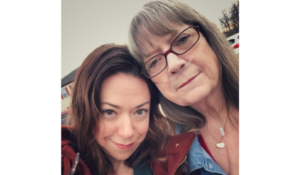–by Janyne McConnaughey, PhD
Every adult knows that there are triggers in life. We often know each other’s triggers, and in toxic relationships, we talk about how we push each other’s buttons. We know those buttons exist, but we often don’t remember how they got there. It is even harder for children, who are not yet developmentally capable of identifying the trigger. Most difficult of all, for children and adults alike, is that triggers and their causes may be buried in an experience they do not even remember.

When teachers ask a child to explain why she or he did something, we often hear only crickets. On our good days, we sense kids truly have no idea. On our bad days, we think they are intentionally not telling us. On our very worst days, we assume they got up in the morning with the intent to ruin our carefully constructed lessons.
I myself had so many triggers buried in my repressed memories that my inner life resembled a pinball game clanging around under a carefully controlled outer shell. I love the movie Inside Out  because it depicts a kind of control center that is constantly monitoring emotions. No, I don’t agree with everything in the movie, but it does portray a clear sense that there is much more going on inside of us than we often dare acknowledge.
because it depicts a kind of control center that is constantly monitoring emotions. No, I don’t agree with everything in the movie, but it does portray a clear sense that there is much more going on inside of us than we often dare acknowledge.
Children struggle because they have not yet learned to control the triggers that send the emotional control system into overload. What happens on the inside also happens on the outside. This actually provides a wonderful opportunity to help them understand emotions, but in our rush for control, usually through cognitive behavioral management, we miss the chance.
Please understand that this is not a judgment. I am a teacher. I was once locked in a closet by a kindergartener experiencing an emotional meltdown. The closet was off in a passageway, and locked from the outside. This poor design meant I had to run around the building to get back in. No one had answered my call to open the door. The children were all in line, frozen, except the one who had closed and locked the door. He was in a corner rocking. I just shook my head, called for help, and took them to recess.
 If I had understood trauma, I would have known that something I did triggered this child who was trying to find safety the only way he knew how. If you think about it, locking scary things away makes total sense. Now that I understand trauma, I wonder how I inadvertently triggered him into seeking safety at any cost.
If I had understood trauma, I would have known that something I did triggered this child who was trying to find safety the only way he knew how. If you think about it, locking scary things away makes total sense. Now that I understand trauma, I wonder how I inadvertently triggered him into seeking safety at any cost.
Asking him why he did this would have been useless. If he had been older, I might have asked him what a more appropriate course of action might have been. This too would have been useless. He had no idea why he felt the need to lock me in the closet, and if he couldn’t identify the problem, he certainly couldn’t find a solution. The action came out of his emotional fight or flight response, found in the most primitive part of his brain. It probably had to do with early childhood experiences in which he felt unsafe. Finding a cognitive solution to an automatic emotional response is not effective for traumatized children. They didn’t get into the situation by thinking; they can’t get out of it by thinking.
I don’t know if it would have helped him to try to express how he was feeling in that moment. Adults can barely explain feelings. My best choice might have been to say, “Something I did made you feel like you weren’t safe.” Maybe that would have provided words to express the feeling. It might have enabled him to recognize the feeling the next time it happened. Maybe we could have had a signal for him to indicate he was sensing the feeling. My greatest desire should have been for him to feel safe in my classroom. I regret that during those early years of teaching, my greatest desire was to control behavior.
As adults, our gut-level reactions are still almost always tied to a feeling. If we allow ourselves, we can find the connection to an earlier experience. We may have repressed it and need help from a therapist–EMDR is a great option for this–but we can often find the cause. Children, on the other hand, seldom can. Even if the causal experience is almost always out of reach, however, we can at least identify the emotion. Every traumatic experience comes with its own specific set of emotions.

One of my triggers was waiting my turn. I hated lines at stores. Waiting for my turn to get up and speak was prime fodder for a panic attack. Relay races were deadly. Then one day during EMDR therapy, I felt the emotion. In the memory that resurfaced, I was three and my abuser was making his way toward me during naptime. My turn was coming.
How would it have ever been possible for me to explain why I refused to do relay races in fourth grade–in a dress and under the scrutiny of a male PE teacher? I failed PE that year. I was difficult, uncooperative, and refused to submit to the authority of the teacher. Yet what I internalized was that I was not athletic and so I hated PE for the remainder of my school years. It never dawned on me that up until then, I had been a very active child.
The key to unraveling all this was not the thinking process but the identification of feelings. How I felt in day care was how I felt sitting on the sidelines during PE, how I felt every time “my turn was coming.” If we can help children identify the emotion, even if they can’t access the memory, they can begin to connect the emotion to new behaviors, such as a signal that they are in distress, and so stop the behaviors that no one understands.
 During therapy, I often had to make distress calls. Bless my therapist! I would feel the emotions surfacing and want to control them by heading to bed, where I felt safe. If I was out driving, I sometimes got stuck. I desperately needed to hear her voice and know she would keep me safe. As I began to heal the trauma connected to these triggers, the cries for help lessened. As awkward as all this was in my 60s, it provided invaluable insights into understanding children who simply need to know they are safe. They need to know it is OK to cry for help. It is doubtful that anyone has ever been there for them in that way. I was over 60 before someone told me it was OK to ask for help in order to feel safe.
During therapy, I often had to make distress calls. Bless my therapist! I would feel the emotions surfacing and want to control them by heading to bed, where I felt safe. If I was out driving, I sometimes got stuck. I desperately needed to hear her voice and know she would keep me safe. As I began to heal the trauma connected to these triggers, the cries for help lessened. As awkward as all this was in my 60s, it provided invaluable insights into understanding children who simply need to know they are safe. They need to know it is OK to cry for help. It is doubtful that anyone has ever been there for them in that way. I was over 60 before someone told me it was OK to ask for help in order to feel safe.
We can’t always know what makes children feel unsafe, but we can help them recognize the feeling and signal for help before they act out the fear. Just as my therapist kept me safe and helped me understand I was no longer in danger, children can learn to feel safe in the classroom with a teacher who understands the effects of trauma on behavior.


